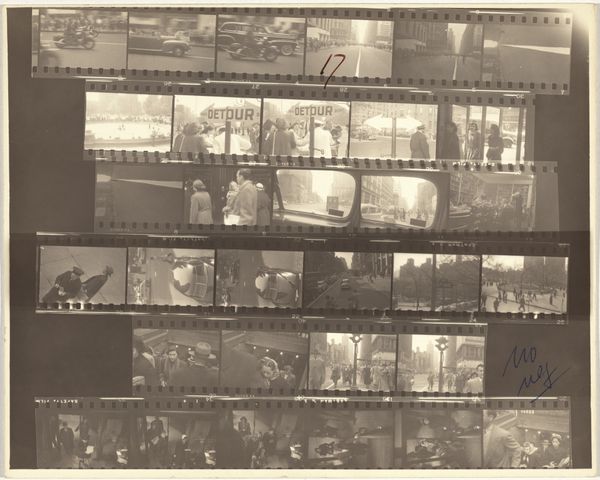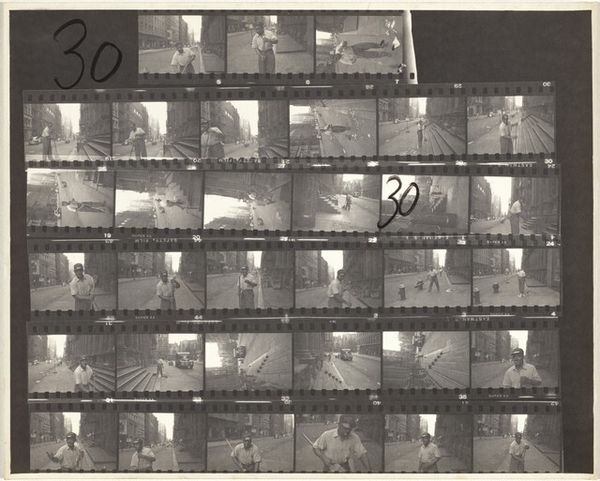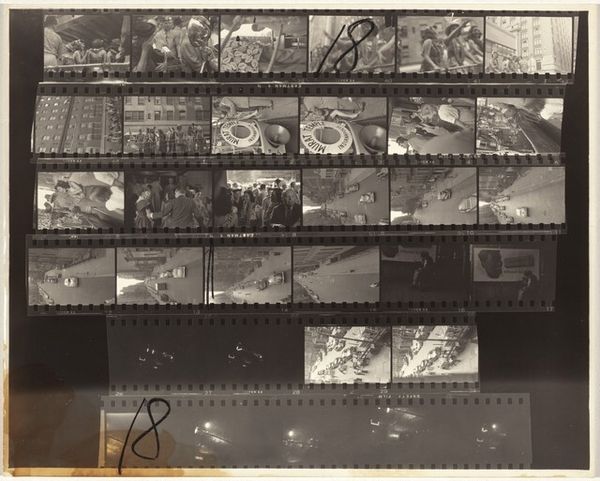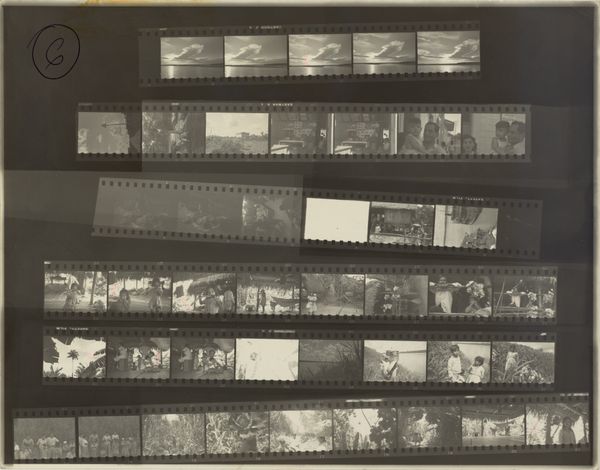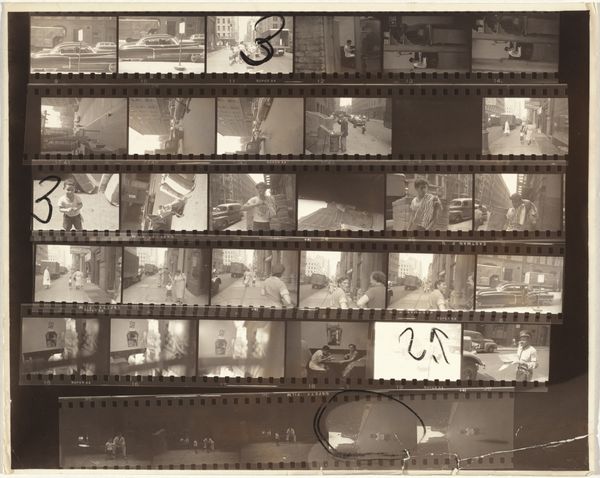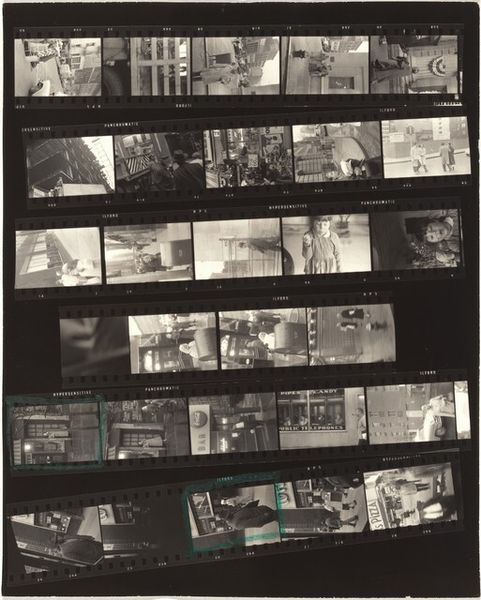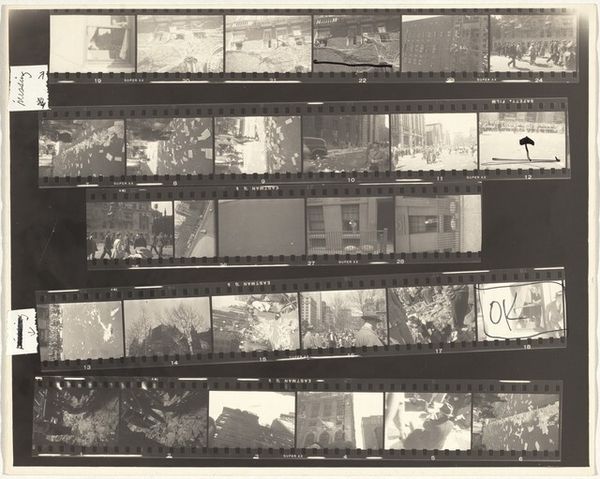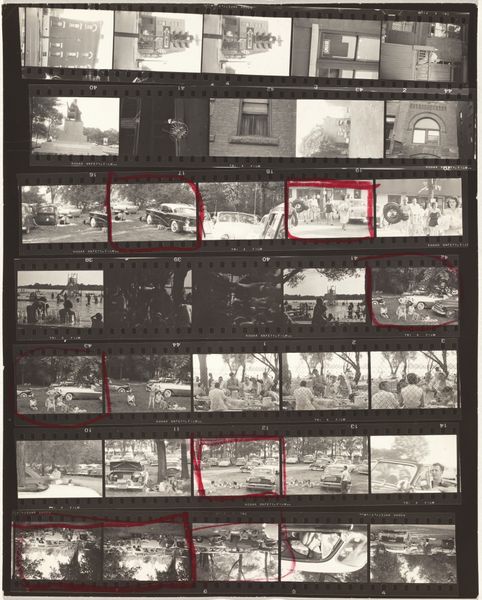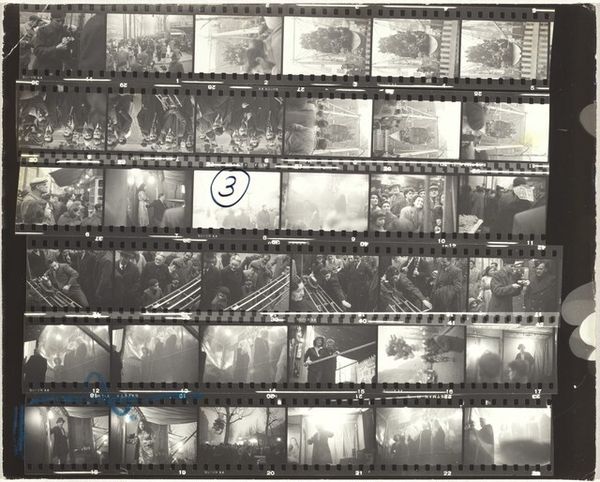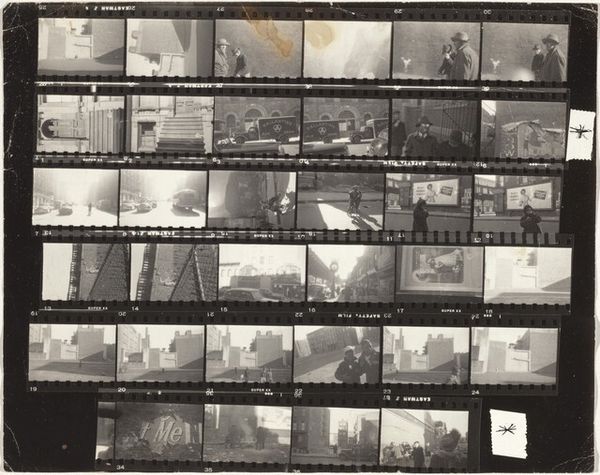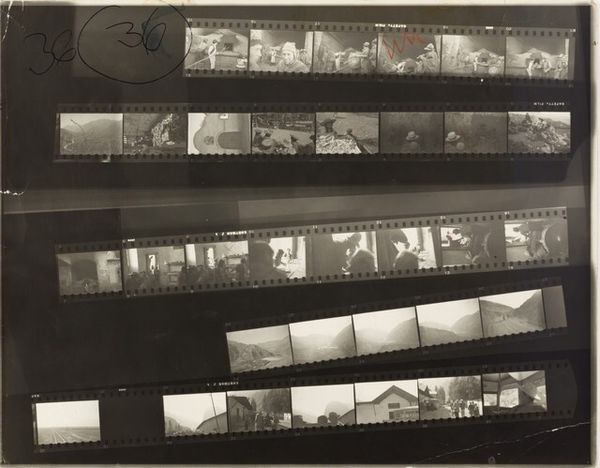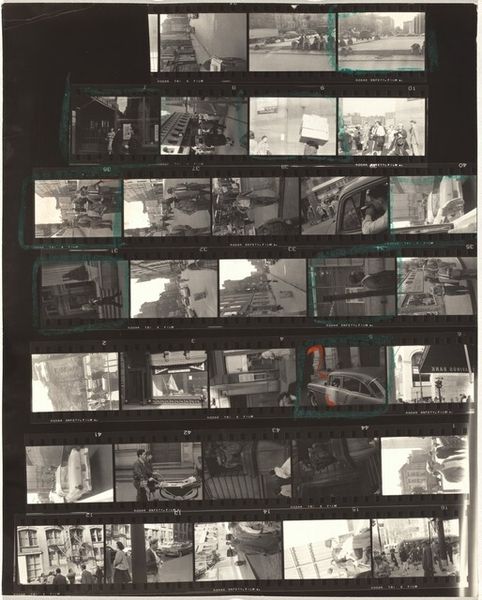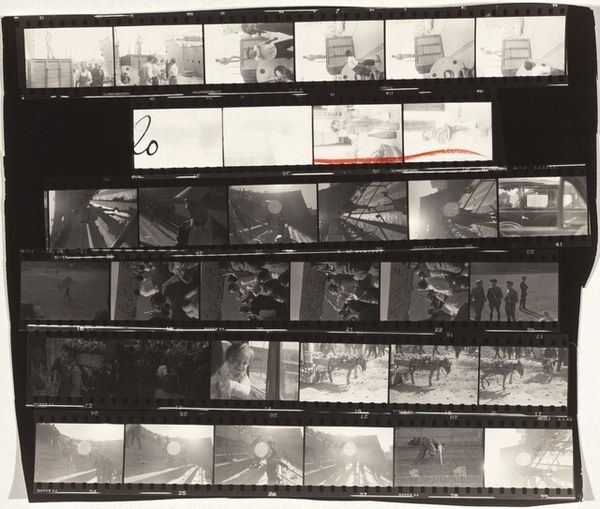
Dimensions: overall: 20.2 x 25.2 cm (7 15/16 x 9 15/16 in.)
Copyright: National Gallery of Art: CC0 1.0
Editor: So, this is Robert Frank's "11th Street story 33/People You Don't See 14" from 1951, it's a series of photographic film strips. I’m struck by the fragmented view of urban life, almost like fleeting memories captured on celluloid. What stands out to you, looking at its composition? Curator: The inherent structure of the film strip itself is crucial here. Each frame is a unit, but also part of a larger sequence. Consider how Frank uses light and shadow within each frame and across the entire strip. Is there a pattern, a rhythm established by the interplay of these elements? How do you see that shaping our reading of this “story?” Editor: I see the repetition of cars and pedestrians. Maybe that rhythm mimics the daily grind of city life? The high-contrast graininess also stands out. Is that just a stylistic choice, or is there more to it? Curator: The grain contributes significantly to the photograph’s texture and overall visual effect. Formally, grain creates a sense of visual noise. It flattens the image, denying deep illusionistic space. Editor: So, it's almost anti-realistic? It seems like it prioritizes the texture and feeling of the city over perfectly clear representation. Curator: Precisely. It asks us to consider not only *what* is being depicted, but *how* it is being depicted. Do you think Frank makes any commentary by repeating a single element multiple times? Editor: Now I see that Frank used these repeating elements, such as architecture, cars and people, to show the diversity that can coexist in one location, something beautiful or common can occur everywhere. Curator: Exactly. Each photograph in the frame speaks in unison. It gives greater clarity to the photo. I was glad to walk through the process of understanding this great piece with you!
Comments
No comments
Be the first to comment and join the conversation on the ultimate creative platform.
